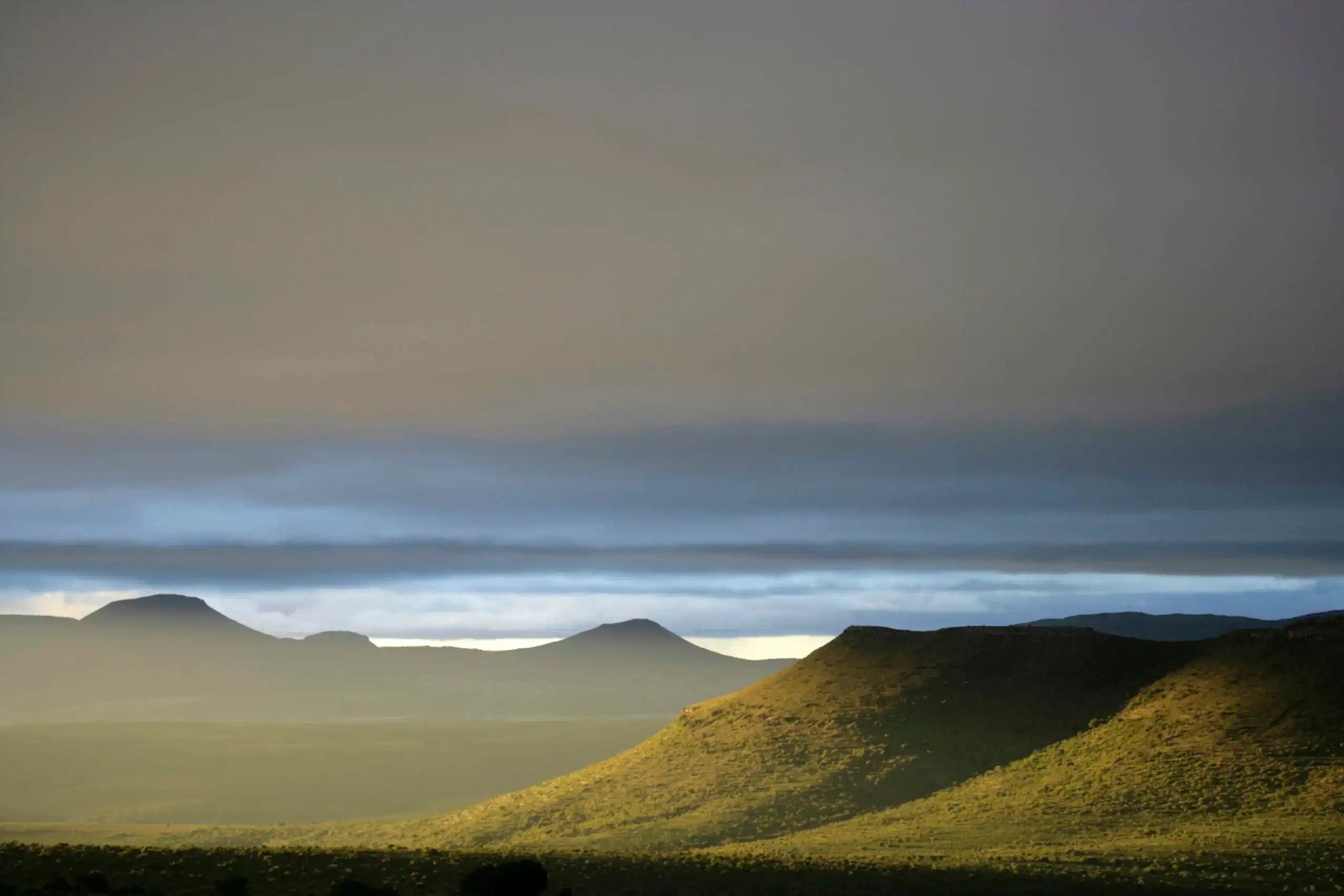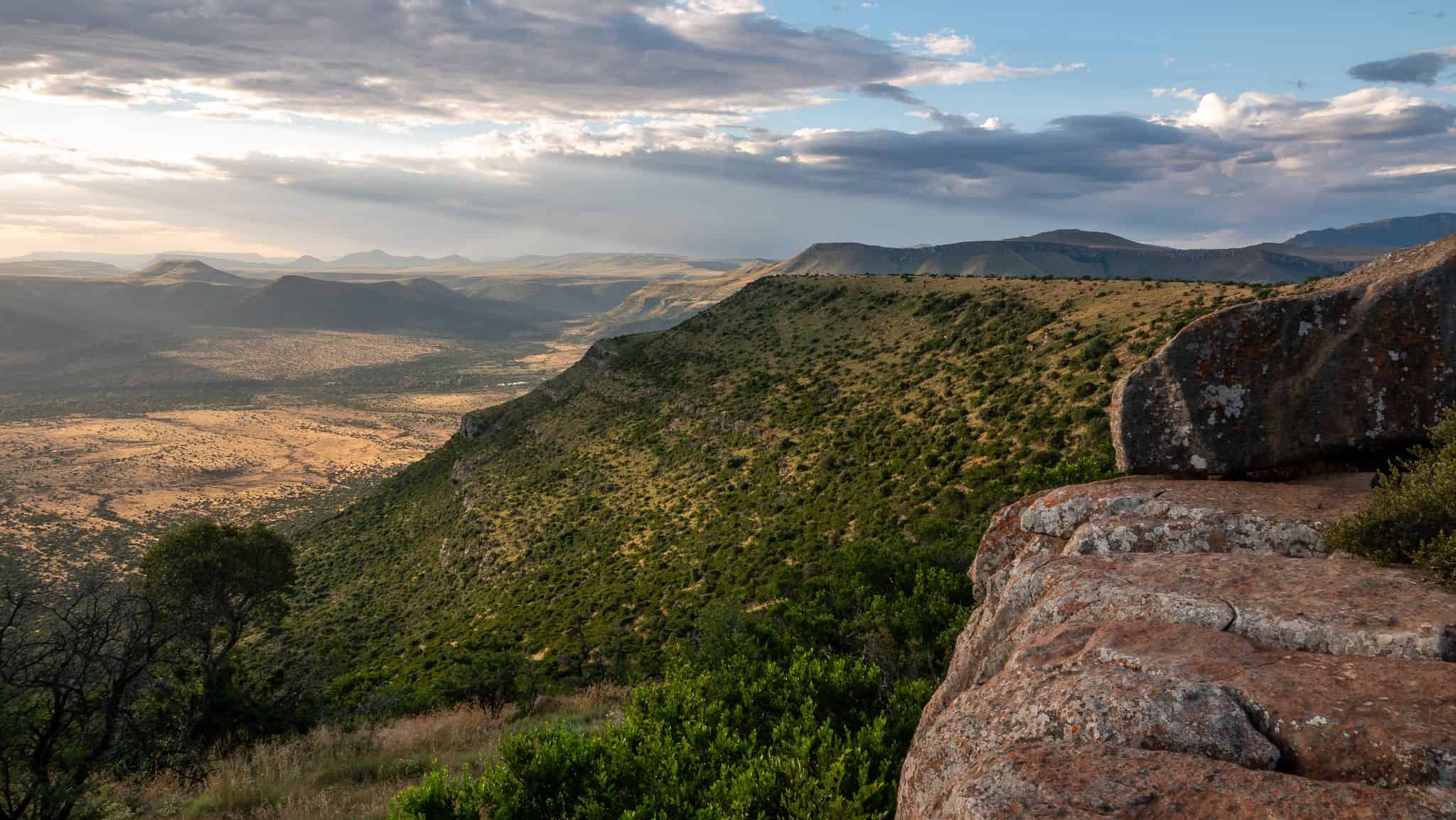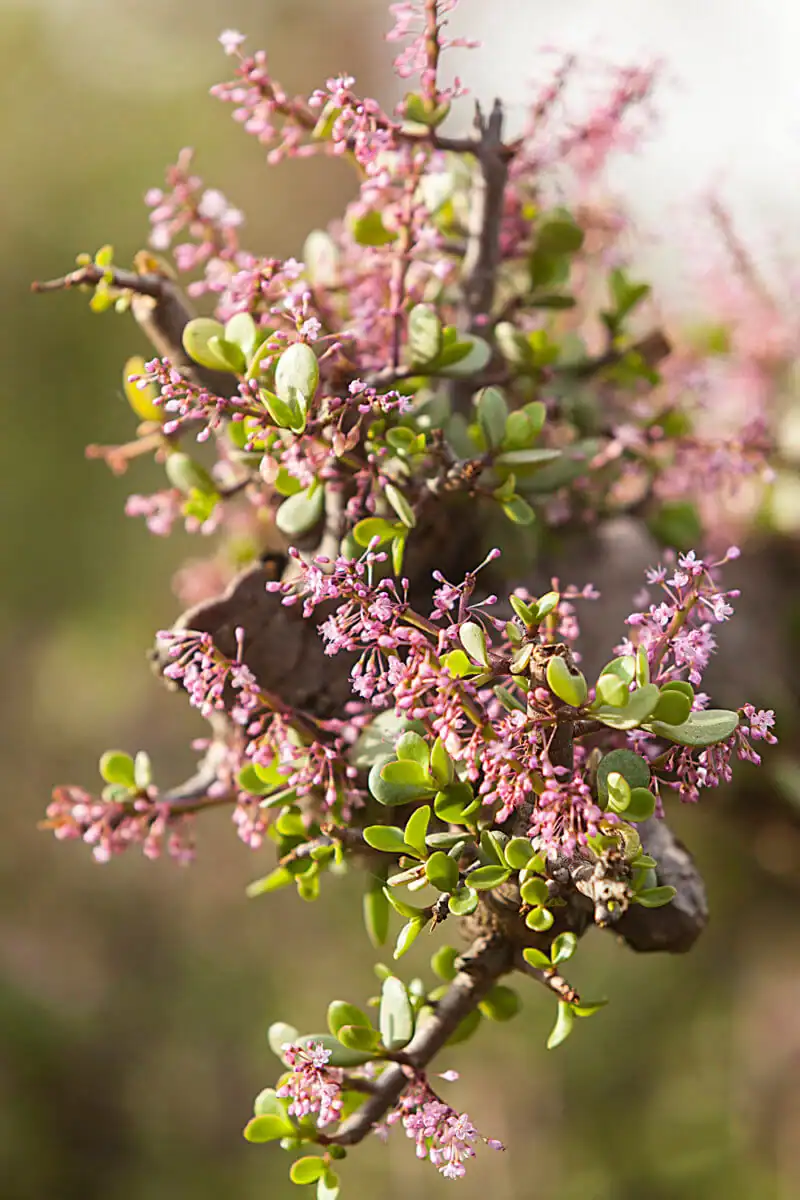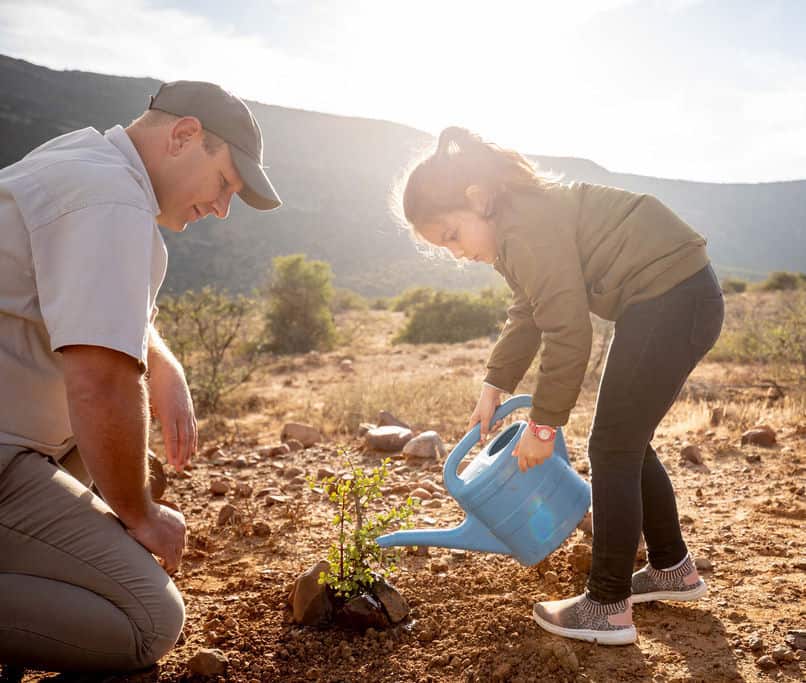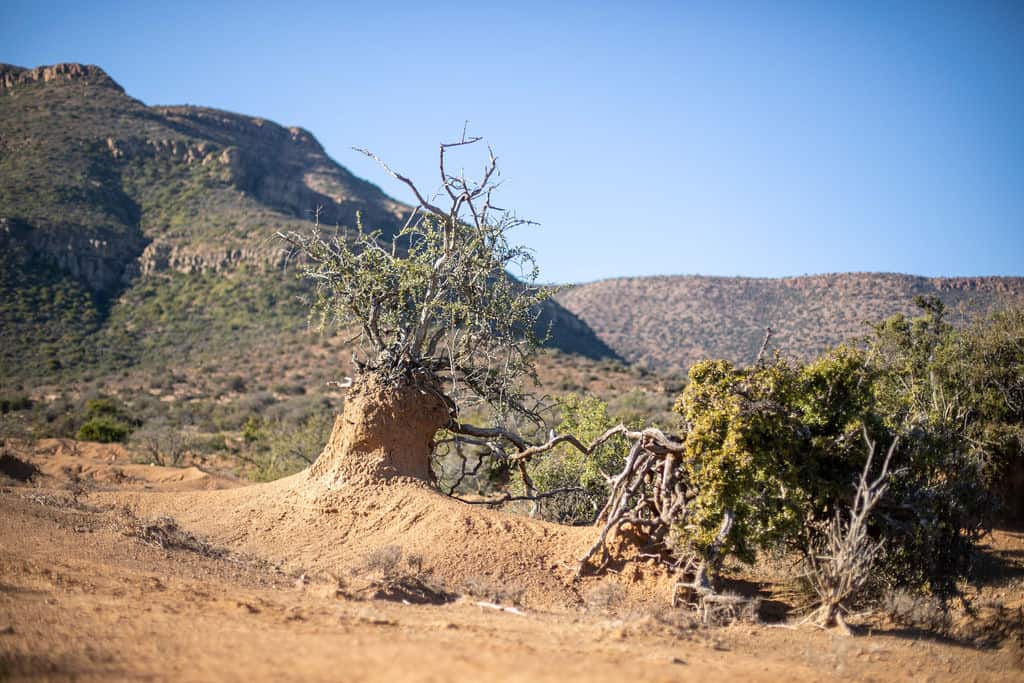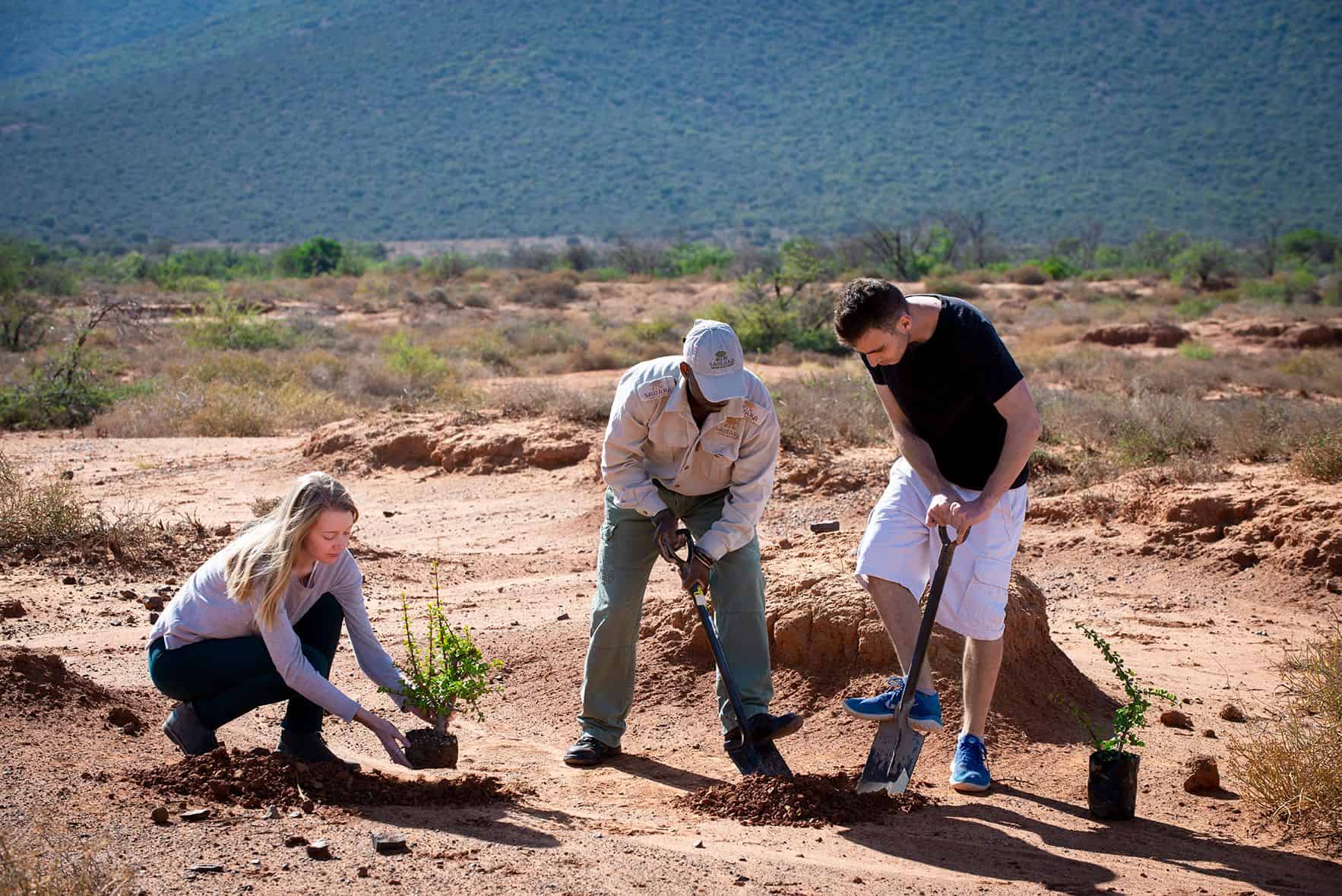Found predominantly in South Africa’s Eastern Cape region, Spekboom is a favoured plant for land restoration projects in appropriate habitats. The plant’s roots bind the soil, preventing erosion, and in ideal conditions intact Spekboom thicket is said to rival the carbon sequestration potential of the Amazon rainforest.
At Samara, one of the key vegetation biomes is sub-tropical thicket. Before the expansion of small stock farming in the region, this biome would have been home to almost impenetrable Spekboom thicket – a matted carpet of light green leaves that a grown human could walk across. Today, overgrazing by goats has denuded the landscape of much of its Spekboom, leaving only pockets of the plant surviving amidst expanses of bare red earth.
Starting in 2010, Samara has planted Spekboom in previously overgrazed and degraded landscapes, alongside other land restoration measures. The benefits have included slowing water run-off, encouraging conditions conducive to the growth of indigenous grasses, improving forage for wildlife and ultimately contributing to climate change mitigation.
Our approach to Spekboom planting has evolved over time, guided by scientists at the University of Stellenbosch, to develop a Spekboom planting model that ensures the highest rate of success and plant survival. One recent fascinating insight takes its cue directly from Nature – we have started to plant some Spekboom horizontally rather than upright, mimicking the way in which a cutting might root after having been broken off and chewed by an elephant!
